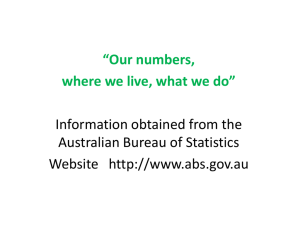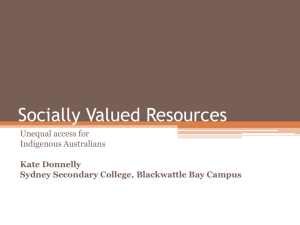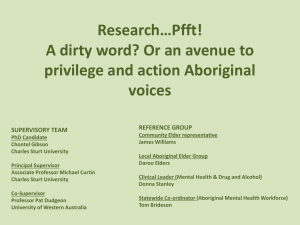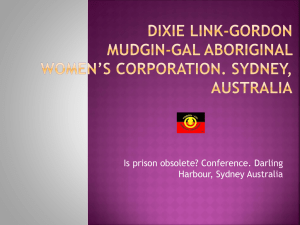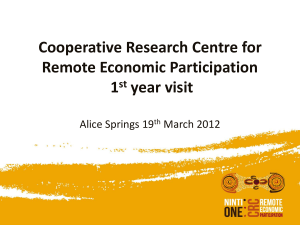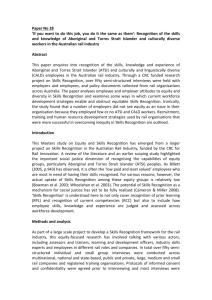ATSI Power Point - Grafton High School
advertisement
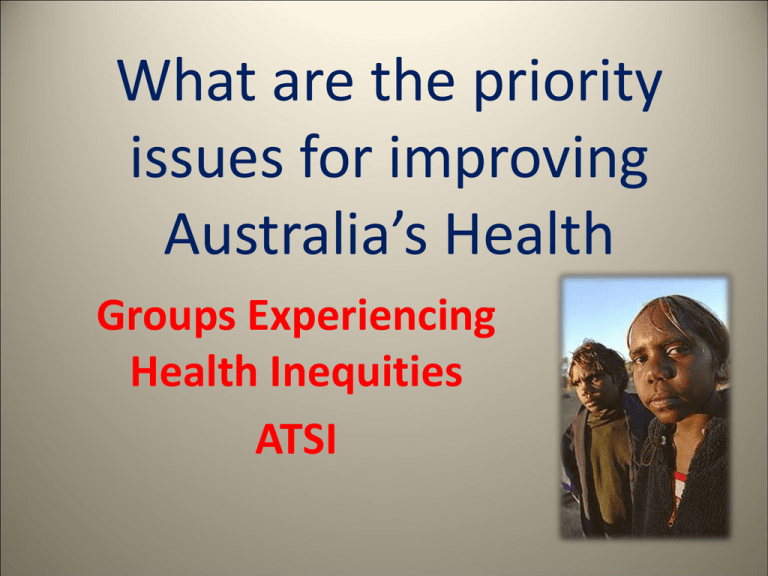
What are the priority issues for improving Australia’s Health Groups Experiencing Health Inequities ATSI What is Inequity? • Inequities refer to situations or actions that lack fairness or justice. • Inequalities refer to social or economic differences between people or groups. Aboriginal and Torres Straight Islander People No greater contrast in the extremes of health status can be found in Australia than that between Aboriginal and Torres Strait Islander (ATSI) peoples and the rest of the Australian population. ATSI peoples die at a much younger age and are more likely to experience disability and reduced quality of life because of ill-health. Aboriginal and Torres Straight Islander People Life Expectancy 10 years less than non ATSI Higher Infant mortality 3 times higher than non ATSI Leading Cause of death • • • • • Likely cause of death Heart Attack – 5 times more likely to die Cancer – 2 times more likely to die Diabetes – 18 times more likely to die Suicide – 2 times more likely to die What disease kills ATSI • • • • • Cause of Death 23% from CVD 12% from Diabetes 12% from Mental Disorders 9% from Respiratory Disease ATSI are more likely to die from injury Intentional Self Harm Intentional Self Harm Transport Accidents Transport Accidents Assaults Assaults Other Other Males Females Major Health Issues • • • • • Mental Illness Diabetes Kidney Disease Asthma Communicable Disease (TB, influenza, meningococcal, syphilis, gonorrhoea, HIV/AIDS) Causes of the Inequities To explain the extreme inequities in Indigenous Australian health status simply in terms of lifestyle and risk factors ignores the socio-cultural factors that limit their access to better health. The contributors to the poor health status of many Indigenous people are: • social factors, such as dispossession, dislocation and discrimination • disadvantages in education, housing, income and employment • physical environmental factors. Lack of access to appropriate health services is another problem. The roles of individuals, communities and governments in addressing the health inequities Government There are two peak agencies which coordinate Indigenous health services at the federal government level, while a third peak body in New South Wales oversees Indigenous health at a state level. The Office of Aboriginal and Torres Strait Islander Health (OATSIH ) delivery of mainstream health services administering and funding ATSI community controlled health services. The National Aboriginal Community Controlled Health Organisation (NACCHO) autonomous body that advocates for improvements to ATSI health. The Aboriginal Health and Medical Research Council of NSW (AH&MRC) body for Aboriginal health in New South Wales Community Indigenous Australians do not access primary healthcare services. Mainly due to: *lack of availability of services, *transport and distance to services, *cost and language or cultural barriers. OATSIH, NACCHO and the AH&MRC all aim to improve the access. their strategies working in partnership with community Aboriginal Community Controlled Health Services (ACCHSs) To deliver holistic, comprehensive and culturally appropriate healthcare to the community that controls it. Services include clinical care, health education, promotion, screening, immunisation and counselling, as well as specific programs such as men’s and women’s health, aged care, transport to medical appointments, hearing health, sexual health, substance use and mental health. Individuals * An individual’s capacity to reduce their risky health behaviours and to increase their protective health behaviours or promote good health in others is influenced by a variety of factors; these include age, family history, community support, education, role modelling, access to health services and socioeconomic status. * Education and access that appear to have the greatest impact. * Health services focus on improving the knowledge and skills of community members. Women and mothers are often targeted as custodians of health knowledge and practice.

